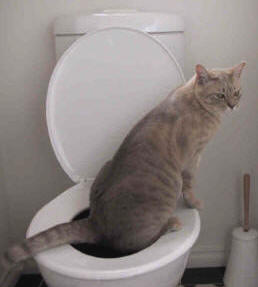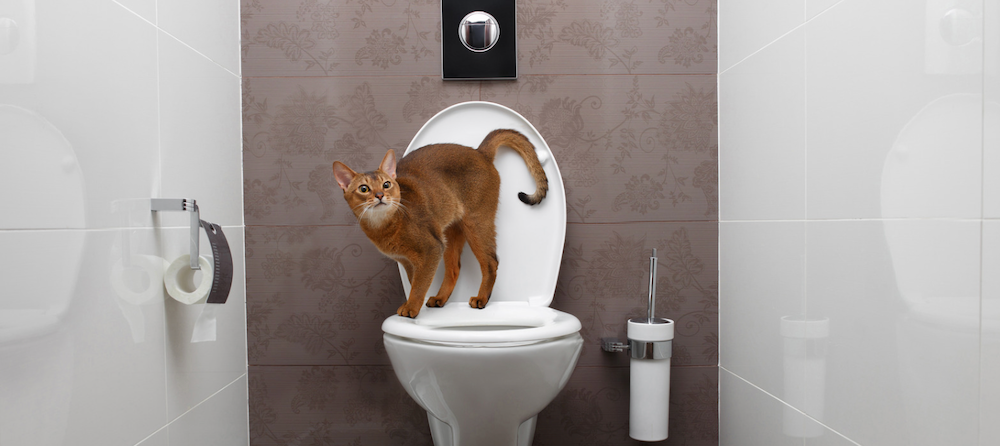Essential Reasons Why Animal Waste Has to Never Be Flushed Down the Toilet
Essential Reasons Why Animal Waste Has to Never Be Flushed Down the Toilet
Blog Article
Just how do you really feel with regards to 4 Reasons Why Dog Poop Cleanup is Important?

When it involves disposing of waste, specifically animal waste, many individuals typically turn to the hassle-free option of flushing it down the bathroom. Nonetheless, this seemingly simple remedy can have severe repercussions for the atmosphere and public health. In this short article, we'll discover why flushing animal waste down the toilet is a bad concept and offer alternative techniques for correct disposal.
Introduction
Proper garbage disposal is essential for preserving environmental sustainability and public health. While it might seem harmless to flush animal waste down the toilet, it can result in various issues, both for the setting and human health.
Risks of flushing pet waste
Ecological effect
Purging animal waste introduces damaging germs and virus into rivers, which can adversely impact marine environments. These pathogens can contaminate water resources and damage aquatic life, disrupting delicate communities.
Public health worries
Pet waste contains unsafe bacteria such as E. coli and Salmonella, which can position major health dangers to people. Flushing animal waste down the bathroom can pollute water supplies, causing the spread of diseases and infections.
Alternatives to flushing
As opposed to purging pet waste down the commode, there are a number of alternative disposal techniques that are extra environmentally friendly and hygienic.
Composting
Composting animal waste is an environmentally friendly method to throw away it. By composting, raw material is broken down into nutrient-rich dirt, which can be used to fertilize gardens and plants.
Land fill disposal
Throwing away pet waste in a garbage dump is one more alternative. While not as environmentally friendly as composting, it is a much safer choice to flushing, as it protects against the contamination of water resources.
Family pet waste disposal systems
There are customized animal waste disposal systems offered that safely and hygienically get rid of animal waste. These systems usually utilize enzymes to break down waste and get rid of odors.
Actions to appropriate animal garbage disposal
To make certain correct disposal of animal waste, comply with these actions:
Scooping and getting waste
On a regular basis scoop and bag pet waste using naturally degradable bags. This avoids waste from infecting the environment.
Making use of assigned waste bins
Dispose of bagged pet waste in designated waste containers, such as garden compost bins or garbage dump bins. Avoid flushing it down the toilet in all costs.
Cleansing can and family pet locations routinely
On a regular basis clean can and family pet areas to stop the buildup of waste and germs. Usage pet-safe cleansing products to keep health.
Benefits of appropriate disposal approaches
Adopting appropriate disposal approaches for animal waste supplies a number of benefits:
Decreased environmental pollution
Correct disposal techniques lower the risk of environmental pollution, securing rivers and environments from contamination
Minimized danger of water contamination.
By preventing flushing animal waste down the toilet, the risk of water contamination is dramatically decreased, protecting public health.
Improved hygiene and hygiene
Correct disposal methods promote far better hygiene and health, creating a more secure environment for both humans and animals.
Final thought
In conclusion, purging pet waste down the toilet is unsafe to the setting and public health. By adopting different disposal methods and complying with proper waste management practices, we can decrease the adverse effect of animal waste and add to a cleaner, healthier earth.
What To Do With Dog Poo – The Do's And Don'ts Of Disposing Of Faeces
Dog poo bins
Some councils provide dedicated dog waste bins in popular dog-walking areas that can take dog poo that has been bagged but you can legally dispose of dog waste in any public litter bin, as long as it is securely bagged. This also applies to your wheelie bin at home.
Do not flush
Water companies do not recommend flushing dog faeces down the toilet because certain parasites can survive the water processing treatment and are potentially harmful to humans. You should also never consider flushing dog poo that has been bagged down the toilet as the bags will not break down and instead create severe blockages in the sewage system.
In the woods
The Forestry Commission promotes a ‘stick and flick’ method for dealing with waste in the woods. This means finding a stick and using it to flick any poo from off the path so that it is out of the way of other walkers. You could also bury it as long as it is not in an area where there might be livestock.
Livestock
Parasites found in dog poo can be transmitted to livestock if they inadvertently eat infected faeces that has been left on grazing land. This could result in the death of sheep or abortion in cattle so you should always make sure you pick up your dog’s waste in fields where livestock could be present.

On a regular basis clean can and family pet areas to stop the buildup of waste and germs. Usage pet-safe cleansing products to keep health.
Benefits of appropriate disposal approaches
Adopting appropriate disposal approaches for animal waste supplies a number of benefits:
Decreased environmental pollution
Correct disposal techniques lower the risk of environmental pollution, securing rivers and environments from contamination
Minimized danger of water contamination.
By preventing flushing animal waste down the toilet, the risk of water contamination is dramatically decreased, protecting public health.
Improved hygiene and hygiene
Correct disposal methods promote far better hygiene and health, creating a more secure environment for both humans and animals.
Final thought
In conclusion, purging pet waste down the toilet is unsafe to the setting and public health. By adopting different disposal methods and complying with proper waste management practices, we can decrease the adverse effect of animal waste and add to a cleaner, healthier earth.
What To Do With Dog Poo – The Do's And Don'ts Of Disposing Of Faeces
Dog poo bins
Some councils provide dedicated dog waste bins in popular dog-walking areas that can take dog poo that has been bagged but you can legally dispose of dog waste in any public litter bin, as long as it is securely bagged. This also applies to your wheelie bin at home.
Do not flush
Water companies do not recommend flushing dog faeces down the toilet because certain parasites can survive the water processing treatment and are potentially harmful to humans. You should also never consider flushing dog poo that has been bagged down the toilet as the bags will not break down and instead create severe blockages in the sewage system.
In the woods
The Forestry Commission promotes a ‘stick and flick’ method for dealing with waste in the woods. This means finding a stick and using it to flick any poo from off the path so that it is out of the way of other walkers. You could also bury it as long as it is not in an area where there might be livestock.
Livestock
Parasites found in dog poo can be transmitted to livestock if they inadvertently eat infected faeces that has been left on grazing land. This could result in the death of sheep or abortion in cattle so you should always make sure you pick up your dog’s waste in fields where livestock could be present.

Do you enjoy reading up on 4 Reasons Why Dog Poop Cleanup is Important? Create a remark further down. We will be happy to listen to your views about this blog. We are looking forward to see you back again in the future. Do you know about another individual who is fascinated about the topic? Take a moment to share it. Many thanks for going through it.
Call Today Report this page